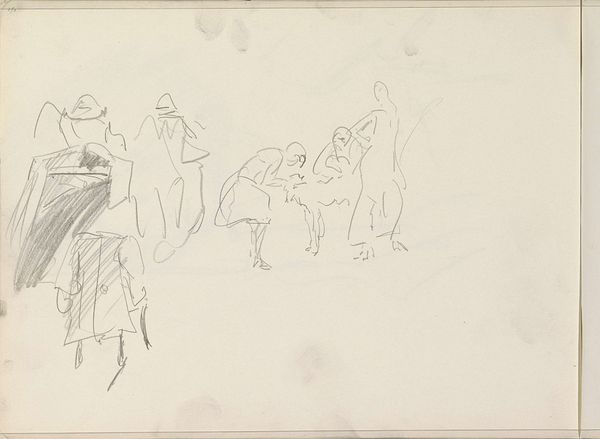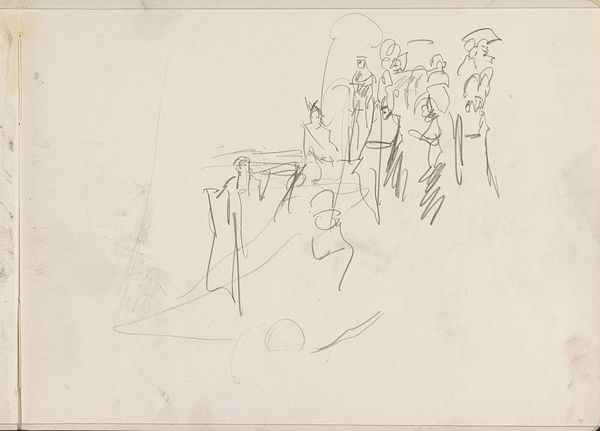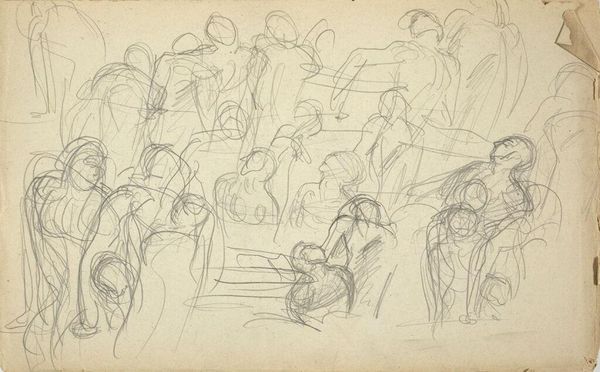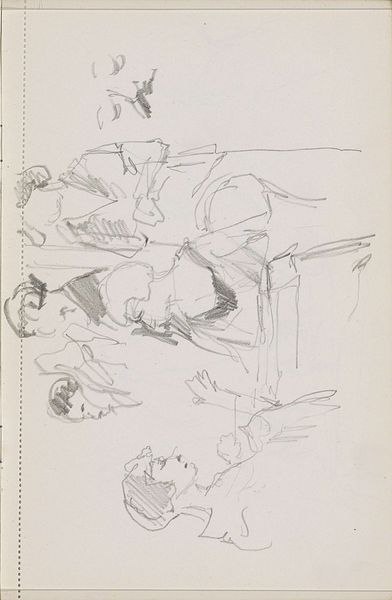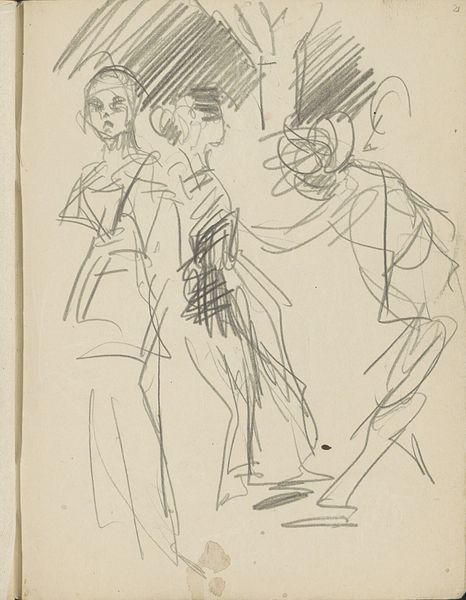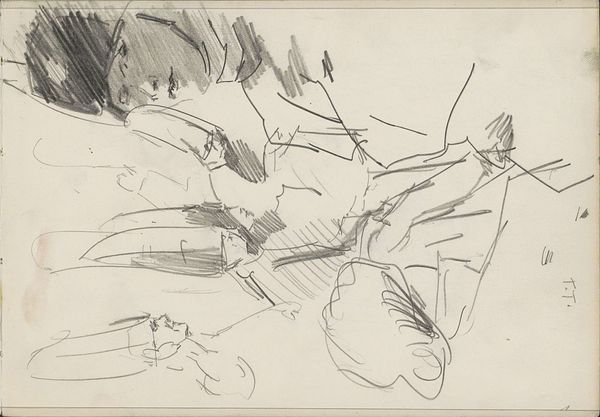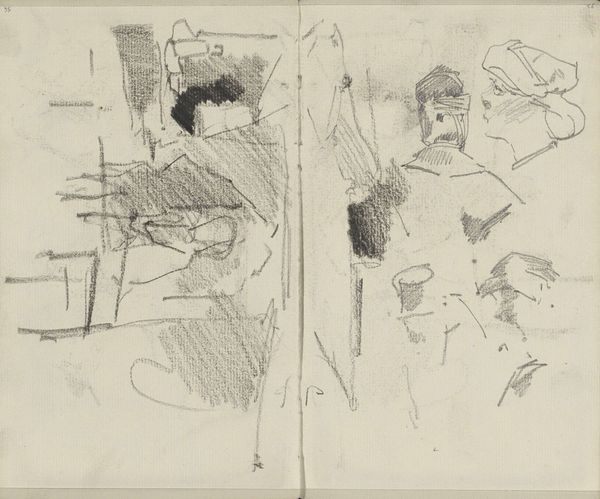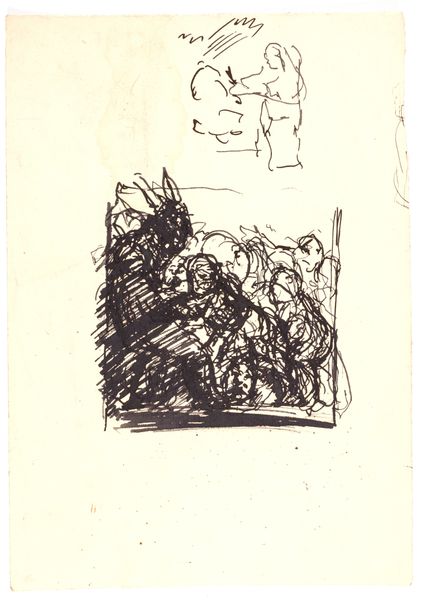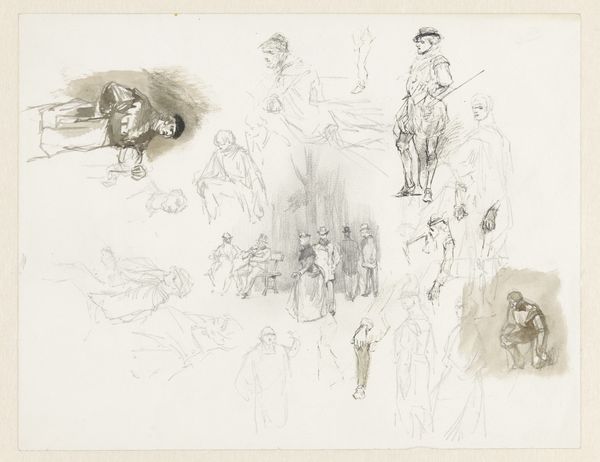
Copyright: Rijks Museum: Open Domain
Curator: Immediately striking is the rapid, almost frantic energy of Isaac Israels’ ink drawing on paper, "Zittende en staande mannen," dating from around 1915 to 1925, which currently resides at the Rijksmuseum. What stands out to you? Editor: There is a compelling roughness, a hurried intimacy. It feels like we’re peering into someone’s private musings—a flurry of studies almost lost to time, revealing a restless mind capturing fleeting figures and moods. Curator: Right, and given Israels' interest in depicting modern life, it begs the question of whom these men might be. Look closely at their clothing and expressions; could they reflect a particular social stratum, class dynamics at play during a period marked by significant political upheaval? The drawing isn’t simply a study in form, it subtly reflects a certain era. Editor: I find it curious that such a seemingly hurried sketch shows the attention to detail in dress. This could imply a degree of documentation regarding social uniforms in relation to work; how specific attires might denote certain occupations and therefore status or lack thereof, offering an insight into societal strata. Curator: Absolutely. Israels, born into an artistic family, navigated the complex societal currents of his time. By emphasizing the materiality, the ink, and the rapid execution, the artist showcases not only his dexterity, but hints to artistic process being readily available—even mass produced with advances in materials like processed papers becoming more mainstream than the exclusivity of vellum in generations prior. How might such details reflect, or perhaps influence Israels' work or choices of subject? Editor: This lends credence to his broader project—perhaps unconsciously—of recording changing power dynamics. But more interestingly the quick sketches that rely heavily on hatching create very lively and energetic visual effect. Curator: It certainly is a dynamic composition, revealing more than initially meets the eye. Thank you for lending your astute perspective, Editor: Thank you for sharing your perspective; together, perhaps we've glimpsed into what influenced this sketch and what the artwork shows about our society, even still.
Comments
No comments
Be the first to comment and join the conversation on the ultimate creative platform.
